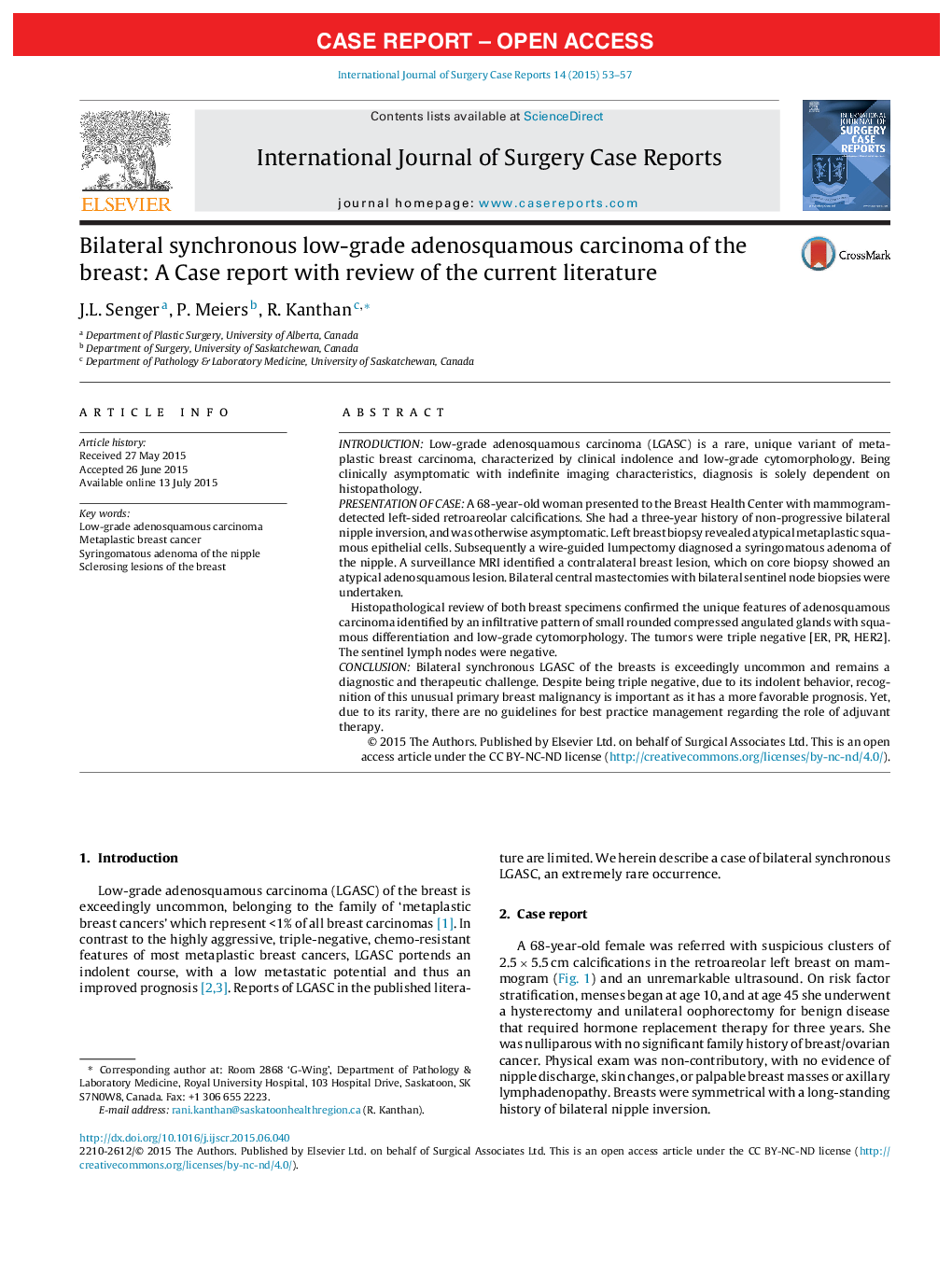| Article ID | Journal | Published Year | Pages | File Type |
|---|---|---|---|---|
| 4289026 | International Journal of Surgery Case Reports | 2015 | 5 Pages |
•LGASC is an uncommon form of triple-negative metaplastic breast carcinoma.•Imaging, FNAC, & CNBx are usually indeterminate with no pathognomonic features.•Histopathology is the gold standard for definitive diagnosis.•Relationship between LGASC and benign mimickers (SAN, CSL) continues to evolve.•LGASC is likely multicentric, thus mastectomy is the recommended management.
IntroductionLow-grade adenosquamous carcinoma (LGASC) is a rare, unique variant of metaplastic breast carcinoma, characterized by clinical indolence and low-grade cytomorphology. Being clinically asymptomatic with indefinite imaging characteristics, diagnosis is solely dependent on histopathology.Presentation of CaseA 68-year-old woman presented to the Breast Health Center with mammogram-detected left-sided retroareolar calcifications. She had a three-year history of non-progressive bilateral nipple inversion, and was otherwise asymptomatic. Left breast biopsy revealed atypical metaplastic squamous epithelial cells. Subsequently a wire-guided lumpectomy diagnosed a syringomatous adenoma of the nipple. A surveillance MRI identified a contralateral breast lesion, which on core biopsy showed an atypical adenosquamous lesion. Bilateral central mastectomies with bilateral sentinel node biopsies were undertaken.Histopathological review of both breast specimens confirmed the unique features of adenosquamous carcinoma identified by an infiltrative pattern of small rounded compressed angulated glands with squamous differentiation and low-grade cytomorphology. The tumors were triple negative [ER, PR, HER2]. The sentinel lymph nodes were negative.ConclusionBilateral synchronous LGASC of the breasts is exceedingly uncommon and remains a diagnostic and therapeutic challenge. Despite being triple negative, due to its indolent behavior, recognition of this unusual primary breast malignancy is important as it has a more favorable prognosis. Yet, due to its rarity, there are no guidelines for best practice management regarding the role of adjuvant therapy.
